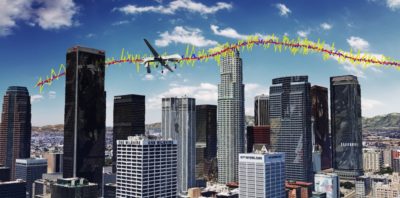
Credit: UCR
We all know that while GPS is great for getting us from point A to point B and about a million other things, but there are still flaws in the system. There are instances when GPS signals just can’t reach you, not to mention the signals put out from GPS are actually pretty weak, which leads to spoofing and jamming. Of course, GPS issues are no small problem for conventional cars, but with self-driving cars and unmanned aircraft systems (UAS) on the rise these issues could become a lot worse. We will need a much more accurate navigation system, or at least a back-up.
Currently, the only global navigation systems in place or developing operate by using satellites. This includes the United States’ GPS, Russia’s GLONASS, and Europe’s Galileo. Since all of these systems function primarily the same, they all have about the same accuracy. The University of California Riverside (UCR) has the Autonomous Systems Perception, Intelligence, and Navigation (ASPIN) team focusing on creating an alternative navigation system, and they’ve recently made some big discoveries.
“Autonomous vehicles will inevitably result in a socio-cultural revolution,” says Kassas, head of the ASPIN laboratory. “My team is addressing the challenges associated with realizing practical, cost-effective, and trustworthy autonomous vehicles. Our overarching goal is to get these vehicles to operate with no human-in-the loop for prolonged periods of time…”
To improve location accuracy and help enable to production of autonomous cars, the ASPIN team is working on generating a system that operates on Signals of Opportunity (SOP) rather than satellites. These SOPs would include various radio transmissions from things like WiFi, mobile phone towers, television stations, etc. The idea is to use these radio signals, which are readily available, as a system of their own in order to make GPS signals more precise, or to take over entirely in the instance of GPS failure.
The team analyzed the SOPs already available, and designed a special radio that is able to be used to receive the timing and positioning radio signals transmitted by the SOPs. This was tested on drones and vehicles, and the results were notable—as seen in the image at the top of the article.
The red line is the ideal path, the yellow line is guided by GPS only, and the blue line is guided by GPS and SOP. As you can see, the accuracy improved quite a bit—and this is only the beginning. The hope is that one day a system can run on SOPs alone, if necessary, instead of supplementing GPS. It’s hard to say when a system like that may become available, but it’s comforting to know progress is being made.
